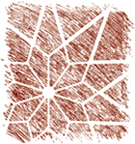March 22, 2025
Addressing the historical harms of slavery starts with facing up to a good deal of uncomfortable truth. What does this mean for white Americans like me or for members of an historically white American church like ours?
We must acknowledge first that the truth has been hidden from us. Participants in the “Stolen Beam” course on reparations that Connie Holmes and I teach will sometimes say, Why was I never taught this? We must seek information from unaccustomed sources, which requires effort and research.
For many of us this research may stir up internal resistance and denial, as well as underlying guilt and shame. These emotions can lead us either to turn away or to become self-congratulatory about our awareness. Such reactions may hinder our ability to address the situation effectively.
To avoid such emotional fragility, we need to rely on our spiritual resources, starting with knowing by faith that we are already forgiven. With insight also we recognize that our involvement in oppressive systems has not been entirely voluntary; external forces compromised our moral clarity. Even more reason to undo the harm that has been done through us!
We forgive ourselves not to ease discomfort but to move past blame and stagnation. This allows us to act from a place of truth and grace as we reclaim our essential connection to all lives across enforced divisions.
But repentance and conversion require collective effort. We need one another for this work. As we connect across our divisions, we find that, even as we let go of the false securities of privilege, we don’t fall into oblivion but rather find instead the supportive embrace of beloved community.
Initially, this may involve a small group of committed individuals, a circle of trusted companions on the journey with whom we can hold the true sight of who we truly are – children of a loving God – while also holding one another accountable for our actions.
Will you join us?
–The Reverend Steven Bonsey
(Steven is the former Canon Pastor at the Cathedral Church of St Paul and current co-facilitator of the “Stolen Beam” course for Episcopal City Mission.)
–Mary Beth Clack, Mary Blocher, Cindy Coldren, Pat Krol, Liz Levin

